Diptera.info :: Identification queries :: Diptera (adults)
|
Anthomyiidae: Lasiomma picipes
|
|
| Tony T |
Posted on 05-05-2008 19:16
|
|
Member Location: New Brunswick, Canada Posts: 664 Joined: 08.02.07 |
2 May 2008 NB Canada. Length: 4.3mm. Superficially resembles Egle/Paregle from last year SEE HERE Male EDIT: ID corrected, many thanks to Michael Ackland. Tony T attached the following image: 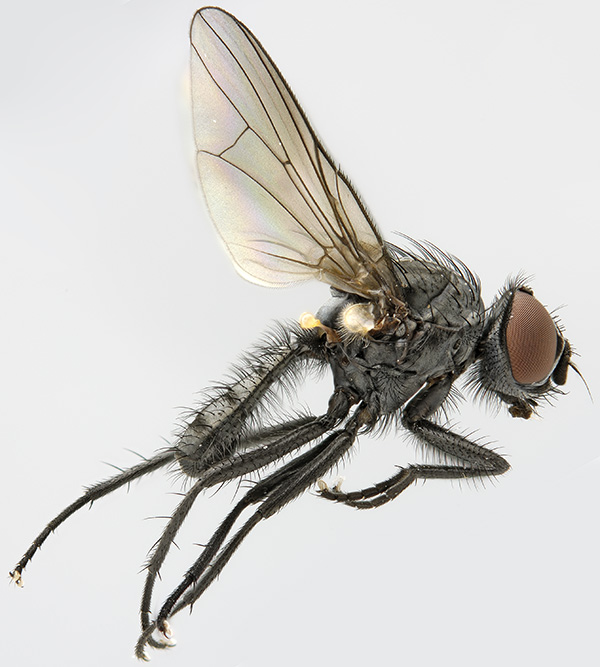 [97.26Kb] Edited by Tony T on 12-05-2008 13:09 |
|
|
|
| jorgemotalmeida |
Posted on 05-05-2008 19:29
|
|
Member Location: Viseu - PORTUGAL Posts: 9296 Joined: 05.06.06 |
Anthomyiidae is right,anal vein reaching clearly in wing margin .  It could be an Egle or Paregle, I agree. |
| Xespok |
Posted on 05-05-2008 21:57
|
|
Member Location: Debrecen, Hungary Posts: 5551 Joined: 02.03.05 |
Palpi seem to short for Egle.
Gabor Keresztes Japan Wildlife Gallery Carpathian Basin Wildlife Gallery |
| Tony T |
Posted on 06-05-2008 01:55
|
|
Member Location: New Brunswick, Canada Posts: 664 Joined: 08.02.07 |
Xespok wrote: Palpi seem to short for Egle. Yes, I overlooked the palps; indeed very short. Blow-up of head. Tony T attached the following image: 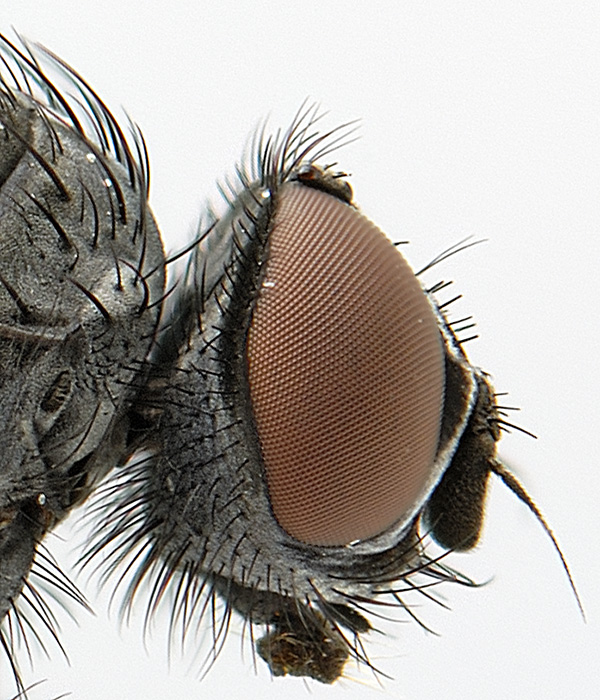 [184.71Kb] |
|
|
|
| Michael Ackland |
Posted on 06-05-2008 09:26
|
|
Member Location: Dorset UK Posts: 680 Joined: 23.02.08 |
Is the arrow pointing to a blunt preapical spur on the fore tibia? If so, it is a species of Delia. Species of Delia are very numerous in the Nearctic, many can only be idenntified from the male genitalia
Michael Ackland attached the following image: 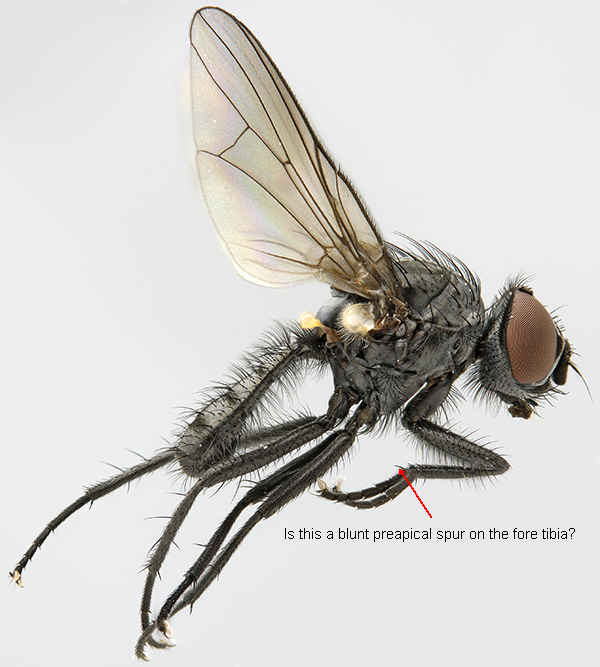 [144.73Kb] |
|
|
|
| Tony T |
Posted on 06-05-2008 18:32
|
|
Member Location: New Brunswick, Canada Posts: 664 Joined: 08.02.07 |
Michael Ackland wrote: Is the arrow pointing to a blunt preapical spur on the fore tibia? If so, it is a species of Delia. Thanks. Yes the tibial spur does seem blunt compared to the one on the femur. Tony T attached the following image: 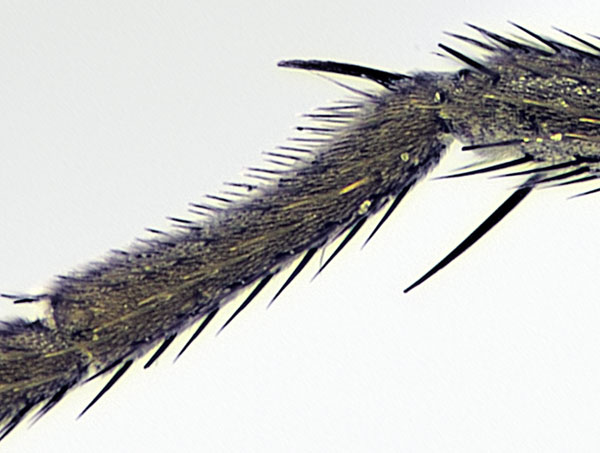 [47.79Kb] |
|
|
|
| jorgemotalmeida |
Posted on 06-05-2008 18:44
|
|
Member Location: Viseu - PORTUGAL Posts: 9296 Joined: 05.06.06 |
nice tip for next time.  |
| Michael Ackland |
Posted on 06-05-2008 21:53
|
|
Member Location: Dorset UK Posts: 680 Joined: 23.02.08 |
Just to expand on this character: some species of Delia (males only) have a blunt spur, some a pointed spur, and some practically no spur. so it's not an absolute character for male Delia, but if there is a blunt spur then it's a Delia. |
|
|
|
| Tony T |
Posted on 08-05-2008 19:56
|
|
Member Location: New Brunswick, Canada Posts: 664 Joined: 08.02.07 |
Michael Ackland wrote: Species of Delia are very numerous in the Nearctic, many can only be idenntified from the male genitalia Thanks Michael; does this image help to narrow down the group? Tony T attached the following image: 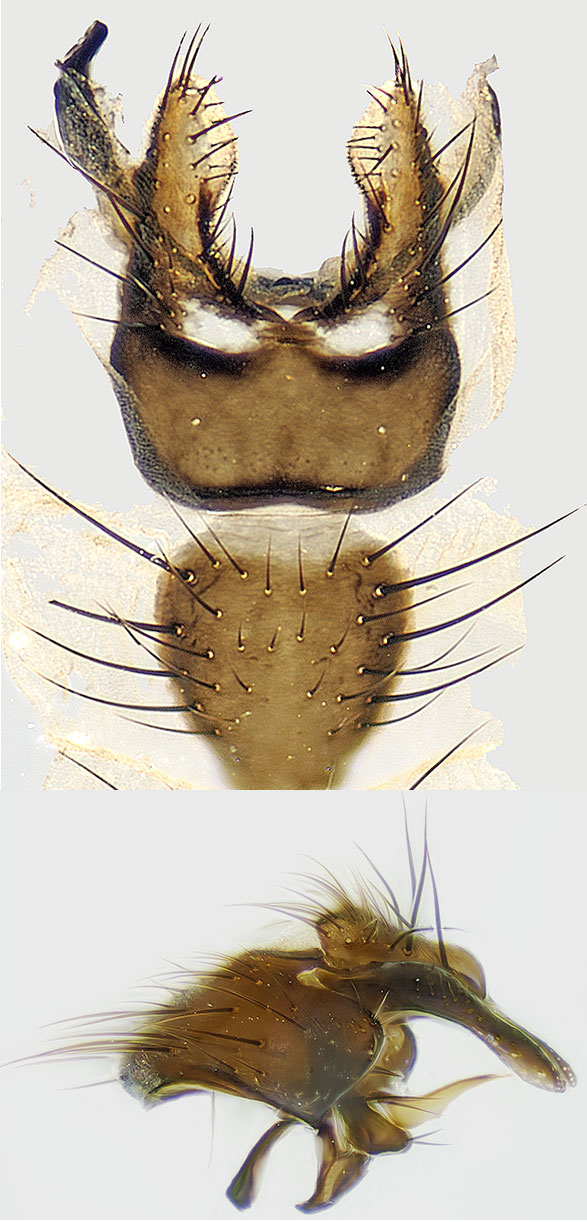 [155Kb] |
|
|
|
| Michael Ackland |
Posted on 10-05-2008 16:41
|
|
Member Location: Dorset UK Posts: 680 Joined: 23.02.08 |
This proves that one should not name anthomyiids from photos!! The genitalia are a species of Lasiomma, as sternite V, long pointed distiphallus, and laterally flattened apical part of the cercal plate (keel-like) indicate. Now I shall have to check Nearctic Lasiomma to see if the bluntish spine is there! I will come back on this |
|
|
|
| Michael Ackland |
Posted on 11-05-2008 10:57
|
|
Member Location: Dorset UK Posts: 680 Joined: 23.02.08 |
The genitalia photo is very similar to Lasiomma picipes Meigen. This speies is Holarctic. There is a Nearctic species, Lasiomma nidicola Aldrich which is very similar. I post my drawings of picipes as a PDF. The blunt seta is a basal ventral seta in the tarsus, which most anthomyiid species have. The blunt seta or spur on some Delia species is a posteroventral apical (or preapical) seta on the fore tibia. The photo of the fly is rather grey dusted, which made me think of Delia, but picipes is darker. Perhaps it is the lighting? You may notice the tiny hairs on the tip of the cercal plate in my drawing? These are absent in nidicola, of which I don't have a drawing. Michael Ackland attached the following file: lasiommapicipes.pdf |
|
|
|
| Tony T |
Posted on 11-05-2008 14:35
|
|
Member Location: New Brunswick, Canada Posts: 664 Joined: 08.02.07 |
Thank you Michael for all the effort/expertise you have put into this fly. It is difficult to judge the exact shade of grey/black to reproduce on a photo. The fly was actually a lot blacker than in my image. I have dorsally flattened, perhaps a little too much, the cercal plate. Are these 2 hairs at the tip of the cercal plate the ones indicative of picipes? Tony T attached the following image: 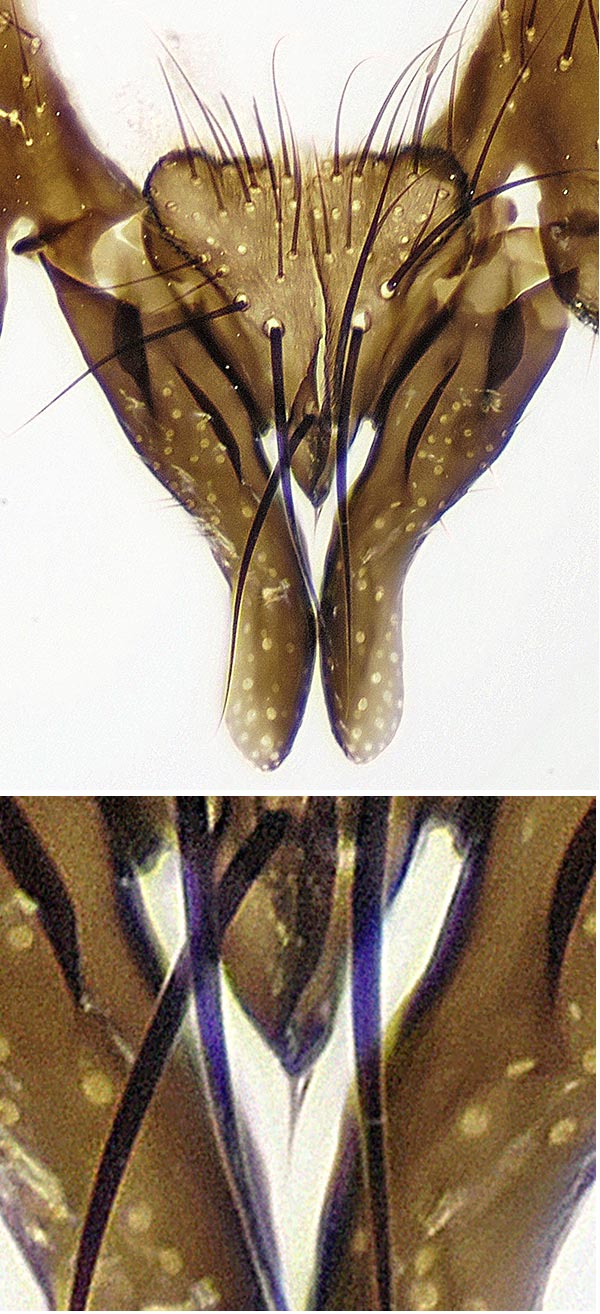 [174.18Kb] |
|
|
|
| Michael Ackland |
Posted on 12-05-2008 09:45
|
|
Member Location: Dorset UK Posts: 680 Joined: 23.02.08 |
Those are the small hairs! Amazing that these hairs seem to be constantly present, though I have no doubt that one could find a specimen in which they are absent. It is your expertise in taking these photos is what enables me to speculate on the identity. Soon we won''t need to send the material halfway around the world. |
|
|
|
| Tony T |
Posted on 12-05-2008 17:07
|
|
Member Location: New Brunswick, Canada Posts: 664 Joined: 08.02.07 |
Michael Ackland wrote: It is your expertise in taking these photos is what enables me to speculate on the identity. Soon we won''t need to send the material halfway around the world. Thanks Michael. Another benefit of decent photos of the entire insect and the dissected genitalia is that it saves an expert, such as you, valuable time. |
|
|
|
| Jump to Forum: |













